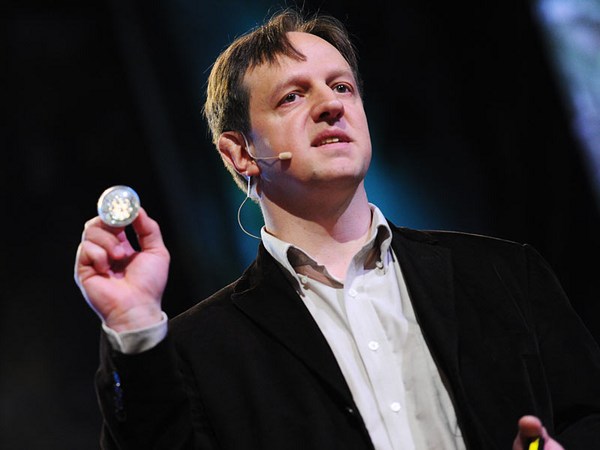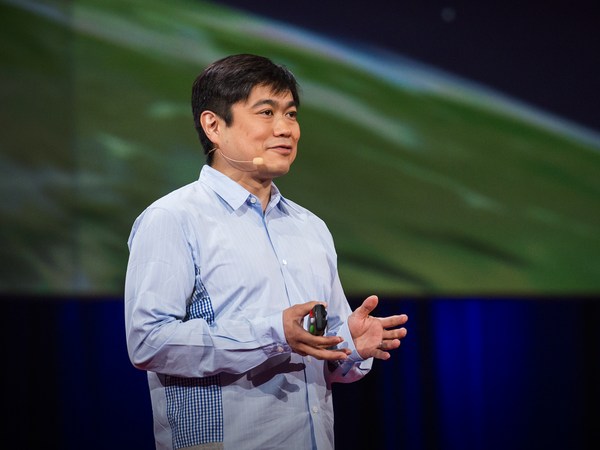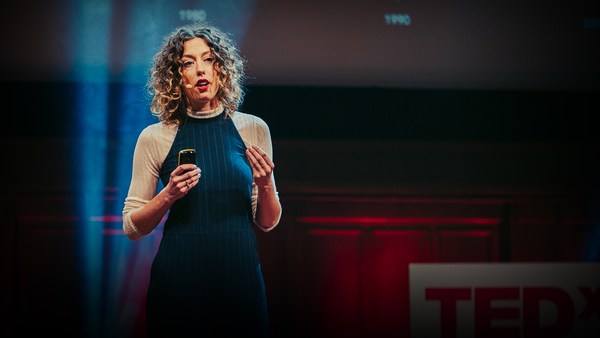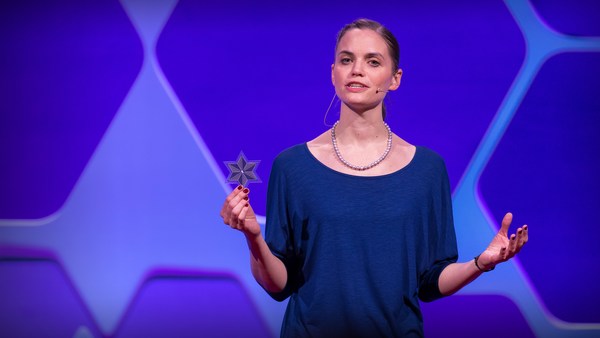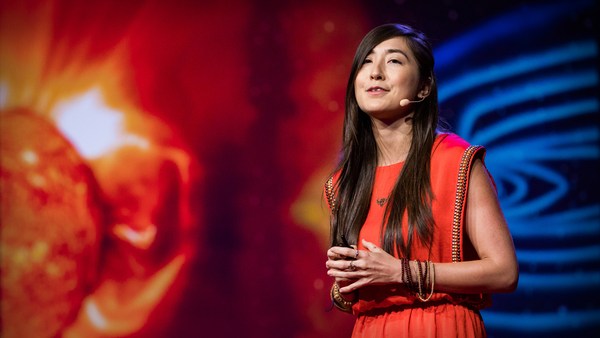I would like to demonstrate for the first time in public that it is possible to transmit a video from a standard off-the-shelf LED lamp to a solar cell with a laptop acting as a receiver. There is no Wi-Fi involved, it's just light.
And you may wonder, what's the point? And the point is this: There will be a massive extension of the Internet to close the digital divide, and also to allow for what we call "The Internet of Things" -- tens of billions of devices connected to the Internet.
In my view, such an extension of the Internet can only work if it's almost energy-neutral. This means we need to use existing infrastructure as much as possible. And this is where the solar cell and the LED come in.
I demonstrated for the first time, at TED in 2011, Li-Fi, or Light Fidelity. Li-Fi uses off-the-shelf LEDs to transmit data incredibly fast, and also in a safe and secure manner. Data is transported by the light, encoded in subtle changes of the brightness. If we look around, we have many LEDs around us, so there's a rich infrastructure of Li-Fi transmitters around us. But so far, we have been using special devices -- small photo detectors, to receive the information encoded in the data. I wanted to find a way to also use existing infrastructure to receive data from our Li-Fi lights. And this is why I have been looking into solar cells and solar panels.
A solar cell absorbs light and converts it into electrical energy. This is why we can use a solar cell to charge our mobile phone. But now we need to remember that the data is encoded in subtle changes of the brightness of the LED, so if the incoming light fluctuates, so does the energy harvested from the solar cell. This means we have a principal mechanism in place to receive information from the light and by the solar cell, because the fluctuations of the energy harvested correspond to the data transmitted.
Of course the question is: can we receive very fast and subtle changes of the brightness, such as the ones transmitted by our LED lights? And the answer to that is yes, we can. We have shown in the lab that we can receive up to 50 megabytes per second from a standard, off-the-shelf solar cell. And this is faster than most broadband connections these days.
Now let me show you in practice. In this box is a standard, off-the-shelf LED lamp. This is a standard, off-the-shelf solar cell; it is connected to the laptop. And also we have an instrument here to visualize the energy we harvest from the solar cell. And this instrument shows something at the moment. This is because the solar cell already harvests light from the ambient light.
Now what I would like to do first is switch on the light, and I'll simply, only switch on the light, for a moment, and what you'll notice is that the instrument jumps to the right. So the solar cell, for a moment, is harvesting energy from this artificial light source. If I turn it off, we see it drops. I turn it on ... So we harvest energy with the solar cell.
But next I would like to activate the streaming of the video. And I've done this by pressing this button. So now this LED lamp here is streaming a video by changing the brightness of the LED in a very subtle way, and in a way that you can't recognize with your eye, because the changes are too fast to recognize. But in order to prove the point, I can block the light of the solar cell. So first you notice the energy harvesting drops and the video stops as well. If I remove the blockage, the video will restart.
(Applause)
And I can repeat that. So we stop the transmission of the video and energy harvesting stops as well. So that is to show that the solar cell acts as a receiver.
But now imagine that this LED lamp is a street light, and there's fog. And so I want to simulate fog, and that's why I brought a handkerchief with me.
(Laughter)
And let me put the handkerchief over the solar cell. First you notice the energy harvested drops, as expected, but now the video still continues. This means, despite the blockage, there's sufficient light coming through the handkerchief to the solar cell, so that the solar cell is able to decode and stream that information, in this case, a high-definition video.
What's really important here is that a solar cell has become a receiver for high-speed wireless signals encoded in light, while it maintains its primary function as an energy-harvesting device. That's why it is possible to use existing solar cells on the roof of a hut to act as a broadband receiver from a laser station on a close by hill, or indeed, lamp post.
And It really doesn't matter where the beam hits the solar cell. And the same is true for translucent solar cells integrated into windows, solar cells integrated into street furniture, or indeed, solar cells integrated into these billions of devices that will form the Internet of Things. Because simply, we don't want to charge these devices regularly, or worse, replace the batteries every few months.
As I said to you, this is the first time I've shown this in public. It's very much a lab demonstration, a prototype. But my team and I are confident that we can take this to market within the next two to three years. And we hope we will be able to contribute to closing the digital divide, and also contribute to connecting all these billions of devices to the Internet. And all of this without causing a massive explosion of energy consumption -- because of the solar cells, quite the opposite.
Thank you.
(Applause)
